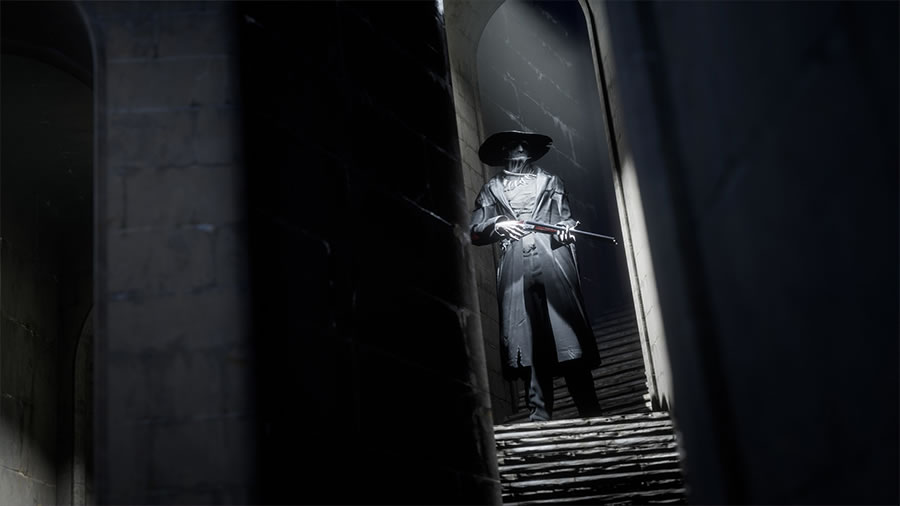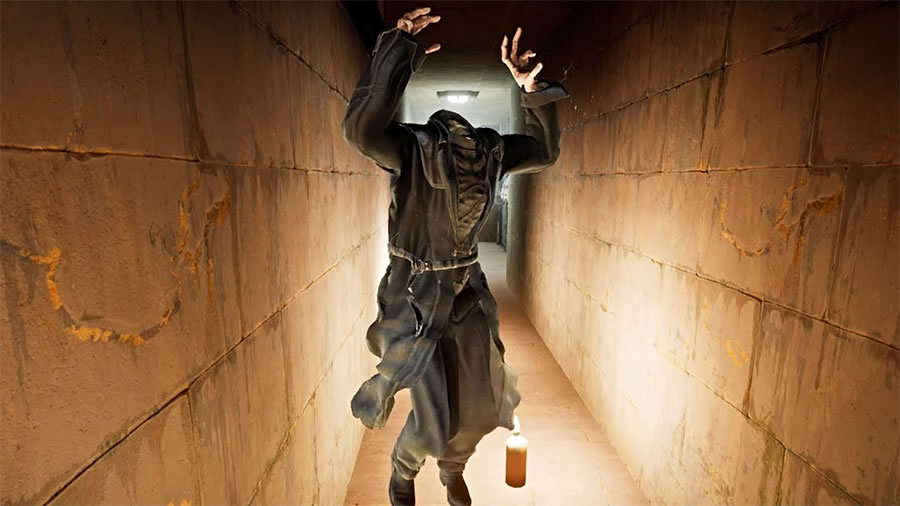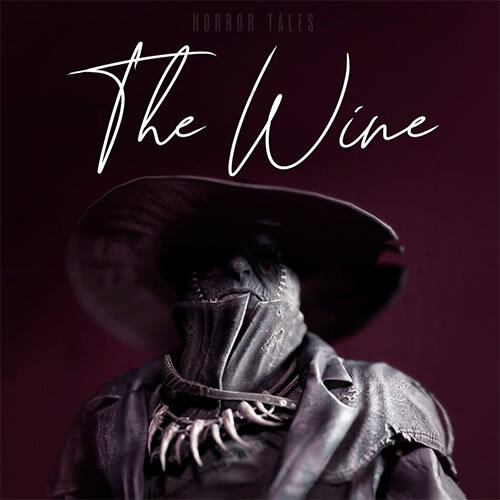- CLASSIC MAGAZINES
- REVIEW CREW
A show recapping what critics thought back
when classic games first came out! - NEXT GENERATION'S BEST & WORST
From the worst 1-star reviews to the best
5-stars can offer, this is Next Generation! - NINTENDO POWER (ARCHIVE)
Experience a variety of shows looking at the
often baffling history of Nintendo Power! - MAGAZINE RETROSPECTIVE
We're looking at the absolutely true history of
some of the most iconic game magazines ever! - SUPER PLAY'S TOP 600
The longest and most ambitious Super NES
countdown on the internet! - THEY SAID WHAT?
Debunking predictions and gossip found
in classic video game magazines! - NEXT GENERATION UNCOVERED
Cyril is back in this spin-off series, featuring the
cover critic review the art of Next Generation! - HARDCORE GAMER MAGAZING (PDF ISSUES)
Download all 36 issues of Hardcore Gamer
Magazine and relive the fun in PDF form!
- REVIEW CREW
- ELECTRONIC GAMING MONTHLY
- ELECTRONIC GAMING MONTHLY RANKS
From Mario to Sonic to Street Fighter, EGM
ranks classic game franchises and consoles! - ELECTRONIC GAMING MONTHLY BEST & WORST
Counting down EGM’s best and worst reviews
going year by year, from 1989 – 2009! - ELECTRONIC GAMING BEST & WORST AWARDS
11-part video series chronicling the ups and
downs of EGM’s Best & Worst Awards!
- ELECTRONIC GAMING MONTHLY RANKS
- GAME HISTORY
- GAME OVER: STORY BREAKDOWNS
Long-running series breaking down game
stories and analyzing their endings! - A BRIEF HISTORY OF GAMING w/ [NAME HERE]
Real history presented in a fun and pithy
format from a variety of game historians! - THE BLACK SHEEP
A series looking back at the black sheep
entries in popular game franchises! - INSTANT EXPERT
Everything you could possibly want to know
about a wide variety of gaming topics! - FREEZE FRAME
When something familiar happens in the games
industry, we're there to take a picture! - I'VE GOT YOUR NUMBER
Learn real video game history through a series
of number-themed episodes, starting at zero! - GREAT MOMENTS IN BAD ACTING
A joyous celebration of some of gaming's
absolute worst voice acting!
- GAME OVER: STORY BREAKDOWNS
- POPULAR SHOWS
- DG NEWS w/ LORNE RISELEY
Newsman Lorne Riseley hosts a regular
series looking at the hottest gaming news! - REVIEW REWIND
Cyril replays a game he reviewed 10+ years
ago to see if he got it right or wrong! - ON-RUNNING FEUDS
Defunct Games' longest-running show, with
editorials, observations and other fun oddities! - DEFUNCT GAMES QUIZ (ARCHIVE)
From online quizzes to game shows, we're
putting your video game knowledge to the test!- QUIZ: ONLINE PASS
Take a weekly quiz to see how well you know
the news and current gaming events! - QUIZ: KNOW THE GAME
One-on-one quiz show where contestants
find out if they actually know classic games! - QUIZ: THE LEADERBOARD
Can you guess the game based on the classic
review? Find out with The Leaderboard!
- QUIZ: ONLINE PASS
- DEFUNCT GAMES VS.
Cyril and the Defunct Games staff isn't afraid
to choose their favorite games and more! - CYRIL READS WORLDS OF POWER
Defunct Games recreates classic game
novelizations through the audio book format!
- DG NEWS w/ LORNE RISELEY
- COMEDY
- GAME EXPECTANCY
How long will your favorite hero live? We crunch
the numbers in this series about dying! - VIDEO GAME ADVICE
Famous game characters answer real personal
advice questions with a humorous slant! - FAKE GAMES: GUERILLA SCRAPBOOK
A long-running series about fake games and
the people who love them (covers included)! - WORST GAME EVER
A contest that attempts to create the worst
video game ever made, complete with covers! - LEVEL 1 STORIES
Literature based on the first stages of some
of your favorite classic video games! - THE COVER CRITIC
One of Defunct Games' earliest shows, Cover
Critic digs up some of the worst box art ever! - COMMERCIAL BREAK
Take a trip through some of the best and
worst video game advertisements of all time! - COMIC BOOK MODS
You've never seen comics like this before.
A curious mix of rewritten video game comics!
- GAME EXPECTANCY
- SERIES ARCHIVE
- NINTENDO SWITCH ONLINE ARCHIVE
A regularly-updated list of every Nintendo
Switch Online release, plus links to review! - PLAYSTATION PLUS CLASSIC ARCHIVE
A comprehensive list of every PlayStation
Plus classic release, including links! - RETRO-BIT PUBLISHING ARCHIVE
A regularly-updated list of every Retro-Bit
game released! - REVIEW MARATHONS w/ ADAM WALLACE
Join critic Adam Wallace as he takes us on a
classic review marathon with different themes!- DEFUNCT GAMES GOLF CLUB
Adam Wallace takes to the links to slice his way
through 72 classic golf game reviews! - 007 IN PIXELS
Adam Wallace takes on the world's greatest spy
as he reviews 15 weeks of James Bond games! - A SALUTE TO VAMPIRES
Adam Wallace is sinking his teeth into a series
covering Castlevania, BloodRayne and more! - CAPCOM'S CURSE
Adam Wallace is celebrating 13 days of Halloween
with a line-up of Capcom's scariest games! - THE FALL OF SUPERMAN
Adam Wallace is a man of steel for playing
some of the absolute worst Superman games! - THE 31 GAMES OF HALLOWEEN
Adam Wallace spends every day of October afraid
as he reviews some of the scariest games ever! - 12 WEEKS OF STAR TREK
Adam Wallace boldly goes where no critic has
gone before in this Star Trek marathon!
- DEFUNCT GAMES GOLF CLUB
- DAYS OF CHRISTMAS (ARCHIVE)
Annual holiday series with themed-episodes
that date all the way back to 2001!- 2015: 30 Ridiculous Retro Rumors
- 2014: 29 Magazines of Christmas
- 2013: 29 Questionable Power-Ups of Christmas
- 2012: 34 Theme Songs of Christmas
- 2011: 32 Game Endings of Christmas
- 2010: 31 Bonus Levels of Christmas
- 2009: 30 Genres of Christmas
- 2008: 29 Controls of Christmas
- 2007: 34 Cliches of Christmas
- 2006: 33 Consoles of Christmas
- 2005: 32 Articles of Christmas
- 2004: 31 Websites of Christmas
- 2003: 29 Issues of Christmas
- 2002: 28 Years of Christmas
- 2001: 33 Days of Christmas
- NINTENDO SWITCH ONLINE ARCHIVE
- REVIEW ARCHIVE
- FULL ARCHIVE
Horror Tales: The Wine
As we all begin to come to grips with the reality that the global pandemic isn't going anywhere, we're starting to see the impact this moment in time is having on art and entertainment. It's in the way musicians are taking to Zoom to write songs, television characters are masking up and Hollywood directors are using COVID-19 as the jumping off point for dystopian sci-fi thrillers. If you've been waiting for a pandemic-themed horror game to add an extra layer of fear and dread to your life, then let me introduce you to The Wine from developer Carlos Coronado. This is a dark and twisted tale of disease, despair, misinformation and class divides, all set on a small Mediterranean island. You're going to need more than just a stiff drink if you hope to survive The Wine, the first of a planned series of Horror Tales.
Let's start off with the bad news: The world is in the midst of a deadly pandemic and everybody is freaking out. Thankfully, there's a cure. Everybody has been telling Marti Vermello that there's a well-known winery that makes a special blend that will counteract the symptoms of the Devil's Fever. Seeing this as his only shot to save his family, Marti decides to set sail to this small island in hopes of finding a bottle of their finest red wine. This turns out to be a terrible decision.
Without spoiling anything, I will say that Marti is not alone on this island. That's made perfectly clear within the first few minutes of him landing on shore. The other thing that is painfully obvious is that the island was not immune to the pandemic. The once-idyllic setting has been ravaged by disease, with the sights (and smells) of death everywhere. We see signs of confusion and desperation as the illness spread, giving us a glimpse into the final fatal hours of a doomed city.
All this is conveyed through both the haunting visuals and the notes and newspaper clippings we find lying around. Yes, this is one of those games where the story is fed to us through journals and pieces of paper that are posted in convenient locations. It's not ideal, but considering the circumstances, it's one of the only ways to drive the story forward. This is how we learn about the capital city's safety measures, who they blamed for the outbreak, what they did to the infected and how those in power used the tragedy to their advantage. The more we uncover about this island, the clearer it is that there was a lot more going on than just a pandemic.
The game is played entirely from the first-person perspective, though there's never any combat. The closest we get to a weapon is a flashlight, which wins the battle against dark basements. Instead what we get are a lot of platforming puzzles. This is the kind of game where the levels cleverly connect together, setting up challenges where you'll need to jump between platforms or use moving carts to get to hard-to-reach areas. Figuring out where to go and how to navigate this disease-stricken city is a lot of the fun of the game, and the level design is real good about keeping you focused on what's important. The Wine is at its best when you're just poking around and seeing the aftermath of the Devil's Fever.
When you're not jumping between platforms, you'll be solving another kind of puzzle. A surprising amount of this game revolves around trying to unlock doors by solving a series of picture puzzles. The concept is simple enough: You need to pair the top picture with the bottom, which is a dial you can turn to complete the combination. The good news is that the answers are scattered around the levels, so all you need to do is look around for pieces of paper or markings on the wall. This is the one and only traditional puzzle you'll run into, so expect each iteration to get a little more challenging.
One of the ways the game ratchets up the difficulty is by adding a bad guy to avoid. I'm not going to get too specific about what's after you or how it connects to the story, but it's important to know that there are a lot of times where our weaponless hero will need to run for his life. This is what I would call the "horror section," and, as much as it pains me to say it, but it's the worst part of The Wine. When the villain jumps out of nowhere and the music screams in your ear, you'll know that it's time to run.
This has a lot of jump scare energy early on, but you'll start to be able to predict these horror moments the more you play. Any time you see a maze or area with multiple narrow paths, you know that you'll be running through them in order to give the bad guy the slip. You should also expect them to pop up in most of the later puzzles, both the platforming and the picture dial.
Beyond the repetition, the problem I have with these horror bits is that they are overused. I found myself more annoyed when they popped up than scared. And once they incorporate the villain into the puzzles, their predictable patterns and behavior completely ruins the illusion. Had these chase scenes been used more sparingly or changed over the course of the game, the terrifying conclusion would have had much more of an impact. And what's extra frustrating is that the ending shows that the game had another card up its sleeve that could have been used in the place of the chase scenes. The balance is all off here.
And that's true of the game in general. The best parts of The Wine involve you exploring and solving the clever platforming puzzles. The way the stages connect with each other is masterful and shows that real care was put into constructing this world. The same goes for the story, which is clunkily communicated, but riveting the whole way through. The commentary is spot-on, yet doesn't overshadow the rest of the game. It's only when we're solving the picture puzzle or running from a mindless bad guy that the momentum slows down to a crawl. It's as if the fun has to stop in order to make you do a bunch of boring game stuff, because that's what's expected. Perhaps others will like flipping through pictures more than me, but The Wine is at its best when it's telling you a story and making Marti jump around.
That's not to say the game isn't scary. The dread found in the first half of the game is genuinely creepy, thanks in large part of the sound design. The island also looks incredible. I already raved about the level designs, but varied stages and detailed back grounds are impressive, especially for such a small team. Considering how many horror games toss you into a dusty old mansion, exploring a sunny Mediterranean island feels like a breath of fresh air. Just don't breathe too much of that air, because there's still a pandemic going on.
HOME |
CONTACT |
NOW HIRING |
WHAT IS DEFUNCT GAMES? |
NINTENDO SWITCH ONLINE |
RETRO-BIT PUBLISHING
Retro-Bit |
Switch Planet |
The Halcyon Show |
Same Name, Different Game |
Dragnix |
Press the Buttons
Game Zone Online | Hardcore Gamer | The Dreamcast Junkyard | Video Game Blogger
Dr Strife | Games For Lunch | Mondo Cool Cast | Boxed Pixels | Sega CD Universe | Gaming Trend
Game Zone Online | Hardcore Gamer | The Dreamcast Junkyard | Video Game Blogger
Dr Strife | Games For Lunch | Mondo Cool Cast | Boxed Pixels | Sega CD Universe | Gaming Trend
Copyright © 2001-2025 Defunct Games
All rights reserved. All trademarks are properties of their respective owners.
All rights reserved. All trademarks are properties of their respective owners.





































